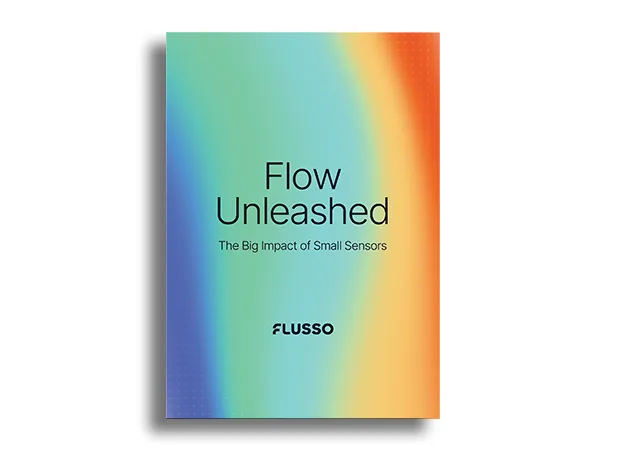17 February 2025
Can Miniature Flow Sensors Unleash Hyperscale Data Centres?
Can Miniature Flow Sensors Unleash Hyperscale Data Centres?
Data centres are effectively the backbone for the vast networks of information that drive our interconnected world. They are currently responsible for around 1% of global electricity consumption and around 40% of each data centre’s energy expenditure goes on cooling and air-conditioning systems.
Hyperscale data centres therefore present a considerable challenge to sustainability; the world’s biggest tech corporations are increasingly leaning on these super scalable, high-density environments, where maximising cloud computing and big data processing power means condensing the space used by blade servers, storage arrays, and networking switches.
Hyperscale data centre owners are among the hundreds of thousands of infrastructure and technology professionals exploring options to increase their energy efficiency and optimise their workloads for performance.
In this piece, we explore how airflow sensors can play a role in that transformation, offering precise monitoring and control of airflow through CPUs and GPUs, as well as identifying filter blockages, flagging potential heat spots, and detecting fire risks early.
The incredible potential of miniature flow sensors
Airflow sensors — alongside temperature sensors and other common monitoring tools — can be crucial in the pursuit of greener, more efficient hyperscale data centres. Here’s how:
Optimising performance through real-time reports
Flusso’s compact, tightly integrated sensors allow for improved monitoring of airflow velocity, direction, patterns, and temperature gradients in real time, helping systems to cool and regulate the data centre’s environmental conditions with greater efficiency and accuracy.
Our proprietary T-MEMS sensing technology is designed to precisely measure both the airflow patterns and temperatures around the CPU and GBU subsystems, directly on the PCB, and close to surrounding components.
Precise airflow management and optimised fan speeds
Flusso’s miniature flow sensors provide granular airflow data to enable fine-tuning of the cooling infrastructure and optimisation of airflow patterns. This ensures that each CPU/GPU card and surrounding components receive the appropriate amount of cooling to operate at peak performance levels.
Flusso’s sensors are incomparably compact, meaning they can seamlessly integrate within the tight confines of the server cards without occupying valuable space, compromising the server density, and disrupting the overall server configuration.
Our sensor readings prompt real-time responses to fan speeds, meaning that the system adjusts cooling processes based on actual need rather than operating at full capacity and using energy without rationale. This not only saves energy but also improves the stability and longevity of the overarching cooling system.
Detecting hotspots and anomalies
In high-density server environments, even minor disruptions can lead to hotspot formations. Flusso’s sensors detect air circulation to reveal areas where heat accumulates due to uneven server loads or inefficient cooling. Recognising these anomalies in real time allows for corrective actions to be taken to maintain optimal cooling.
This essential functionality strongly suggests that miniature flow sensors could unleash hyperscale data centres to their full potential. Beyond hotspot monitoring, signalling other potential issues such as blockages, leaks, or equipment malfunctions means mitigating the risk of major outages and improving reliability.
Proactive and predictive maintenance
Early detection of these anomalies allows for the development of predictive analytics, proactive maintenance and capacity planning, each of which make the hyperscale data centre cooling system more robust and less prone to excess energy expenditure.
Greater reliability
Ultimately, hyperscale data centres are required to maintain continuous operation to keep the lights on at countless major businesses across the globe, and, by extension, to fuel our increasingly technologically-influenced lives.
Reliability is obviously paramount. Miniature flow sensors enhance reliability, mitigating the risk of critical outages caused by overheating and other challenges.
Optimising energy costs and reducing consumption
So, miniature flow sensors feed a continuous stream of accurate data to hyperscale data centre cooling systems and (if calibrated as such) data centre managers themselves. These sensors enable dynamic adjustments that make for high-quality operating conditions and reduce wasteful approaches such as always-on cooling.
Decreasing the needless use of power doesn’t just cut back on carbon footprint; it helps reduce business’s energy costs. Precise airflow data helps with capacity planning and lowers operational expenses whilst supporting core sustainability goals. It’s a win-win.
Broader environmental monitoring
Whilst Flusso’s miniature flow sensors provide vital data on airflow and velocity, they are even more effective when combined with other environmental monitoring systems. For adaptive cooling strategies to truly thrive, they need to draw on data that encompasses temperature, humidity, and other pressure conditions.
We’re excited by the opportunity to integrate our sensors with systems that equally draw on these other readings, encouraging more comprehensive decision-making and rapid responses to changing conditions.
Hyperscale data centres in five years time…
As chip and computing technology continued to evolve at a rapid rate, hyperscale data centres are likely to become even more densely populated, even more mission-critical, and even more prominent across businesses of varying sizes.
As such, over the next few years we see the widespread adoption of miniature flow sensors not just as an industrial ‘perk’, but as an operational necessity. These sensors provide data that allows smart systems and adaptive cooling technologies to optimise cooling performance, boost environmental control, and reduce energy expenditure.
When combined with a rich set of performance and environmental data spanning temperature, humidity, and other pressure conditions, Flusso’s flow sensors can play a major role in unleashing hyperscale data centres and carrying us into a new era of leaner, greener computing power.
Book a chat with a member of our team to learn more.



